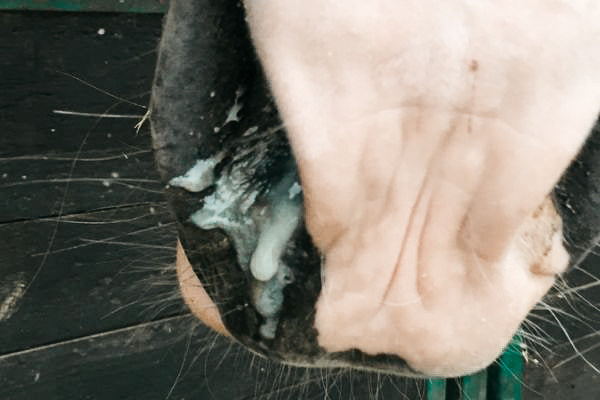
Horse equipment checklist
Saddle cabinets are available in different sizes and designs and, depending on the features, cost a lot of money. It is not uncommon for horse lovers to build or have their own cabinet made. Discarded Bundeswehr cupboards or old wardrobes are also often converted to accommodate horse and rider equipment. This has the advantage that there is plenty of storage space for accessories and the cabinet can be designed according to your own wishes with appropriate bridle and saddle holders and compartments.
But what shouldn't be missing from your closet? Here is a checklist of horse accessories that should not be missing in your saddle cabinet.
Saddle:
Of course, the most expensive accessory is and remains the saddle, and you should store it well and safely. To prevent theft, get a good lock for your sturdy saddle cabinet. Some riders prefer to use multiple saddles for one horse, for example a dressage saddle and a jumping saddle, or a treeless saddle in addition to the eventing saddle. Then you should make sure that each saddle has its own saddle holder.
Saddles are still equipped with a girth, stirrup leathers and stirrups. It's best to get a few good care products for your saddle, e.g. b Saddle soap and leather grease too. Only with regular care can the leather stay soft and not become porous.
Saddle cloth:
The saddle blanket is important to avoid chafing on the horse. Clean blankets are usually ready to be changed if a blanket is very dirty. The saddlecloth does not have to be shaped in the shape of a saddlecloth, although the saddlecloth is the most common shape of saddlecloth. This offers plenty of space to have the horse's name embroidered and is available in many colors and designs.
Bride:
The horse equipment still consists of a bridle. Usually riders have not just one, but a selection of different bridles, bitless and with bit, different nosebands, or equipped with different bits.
Holster:
Of course, a halter for leading and tying the horse should not be missing. A rope should also be attached to this. The halter can be made of leather, specially padded or simple.
As soon as the temperatures rise and the first flies bother your horse, it makes sense to put fly protection on your horse's halter in the form of fly fringes. Another option is a fly mask. A fly mask has the advantage that it can be put on the horse even without a holder.
Grooming box/cleaning bag:
A well-equipped grooming box is essential for horse care. It should contain various horse brushes for sensitive and less sensitive areas of the horse, a hoof scraper, scissors, a mane comb as well as care sprays and hoof care products.
The horse brushes can be made of different materials and can press more or less hard on the horse's skin. Flexible horse brushes adapt to the rider's hand and the horse's body.
Care sprays for skin care and for repelling flies should not be missing in any cupboard. Other horse accessories in the grooming box could be a rasp so that small edges on the hooves can be repaired without the farrier.
In the summer months, a welding knife is also a great helper in your cleaning range. After showering the horse, you can simply “pull off” the water on the horse’s fur.
You should also have a few first aid supplies ready, such as a thermometer, antibacterial spray and bandages.
Lunge:
A lunge is often required for ground work. Other utensils for ground work include the knot halter, the cavesson, a longer, comfortable rope and a whip or crop. You also need the lunge to lunge the horse. To lunge, you can put a lungeing belt on your horse. This gives you the option of using side reins or triangular reins to restrain your horse when lunging.
You can also attach a body bandage to the lungeing belt. The body bandage is stretched from one side of the lungeing belt backwards under the hindquarters to the other side of the lungeing belt. It is intended to encourage the horse to keep its hindquarters more active and is a great tool for building muscle but also for daily training.
Ceilings:
For sensitive horses, a suitable rain blanket or lined outdoor blanket should be stored in the closet. In the summer months it is advisable to have a fly blanket at hand. A fly rug for riding keeps annoying horse flies away in summer.
For the colder seasons, a sweat rug is important as it protects the horse from cooling down after work and transports the sweat from the coat to the outside.
Gaiters:
For pole work, jumping or riding on rough terrain, it is recommended to protect the horse's legs. In addition to various types of gaiters, the rider can choose from hoof bells, bandages or fetlock boots. If the horse has to be transported, transport boots protect the horse's sensitive legs.
Breeches:
The rider's equipment can also be conveniently stored in a spacious cupboard. If you drive straight from work to your horse, you can put on your riding pants in the stable and don't have to spoil your work colleagues with the horse smell.
Riding boots:
Riding boots are usually dirty and so it is advisable to keep them in your closet. Rubber boots and stable shoes for muddy meadows are also well stored in your closet.
Riding helmet:
Of course, a well-fitting riding helmet should not be missing from your equipment. Safety first, even when riding. The helmet protects your head and ensures that you can roam through the forest and fields safely and calmly.
You see, a saddle cabinet contains a lot of treasures and therefore can't be big enough. There are even said to be riders who can't get by with one cupboard and buy a second one to be able to store all of their horse equipment.
Discover more posts

Respiratory diseases in horses – interesting facts
Healthy lung function is very important for the horse as an exercise animal. In fact, there are a lot of riding horses that are affected by respiratory diseases such as COPD or COB. Coughing i...
Continue reading
Cleverly fill the first-aid kit for emergencies using a checklist
Nothing displeases us riders more than a sick or injured horse. How quickly can it happen that your pet kicks his paws while romping around in the paddock, a fight between other dogs ends in a...
Continue reading
